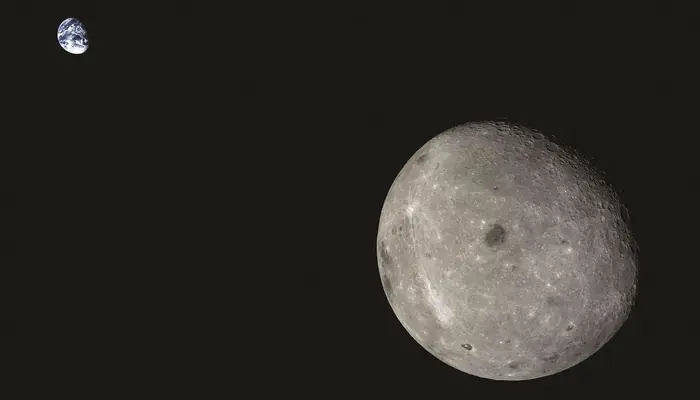China is advancing its lunar exploration plans by exploring laser wireless power transmission (LWPT) to power spacecraft on the moon. This innovative technology uses lasers to wirelessly transmit power from orbiting satellites to receivers on the lunar surface. Researchers believe LWPT could solve critical challenges, including providing energy during the moon’s lengthy and harsh nights, which last 14 Earth days.
Addressing Lunar Energy Challenges
The moon’s tidally locked rotation creates extreme environmental conditions, with 14 days of darkness and temperatures plunging to -200°C (-328°F). While solar power works during lunar days, spacecraft face severe energy shortages at night. LWPT offers a potential solution by transmitting power directly to spacecraft, even in shadowed craters that may hold valuable water-ice resources. These resources could be converted into water, oxygen, or rocket propellant, supporting long-term lunar missions.
Traditional solutions, such as radioisotope power sources, offer limited output and are expensive. Nuclear reactors provide larger-scale power but raise safety and complexity concerns. LWPT stands out as a flexible, scalable option, especially in the vacuum of space.
Advancing LWPT Technology
Researchers from the China Academy of Space Technology (CAST) and other institutes emphasize the need to develop high-power space lasers and precision emission systems. They recommend immediate on-orbit testing to validate the technology’s feasibility. Key challenges include optimizing efficiency, extending transmission ranges, and ensuring visibility under various lunar conditions.
Read: Samsung Teases Hologram Experience Ahead of Unpacked 2025
Supporting China’s Lunar Base Plans
China’s ambitious lunar exploration program includes the construction of the International Lunar Research Station (ILRS) in the 2030s. Precursor missions Chang’e-7 and Chang’e-8, scheduled for 2026 and 2028, aim to assess lunar resources, locate water-ice deposits, and test in-situ resource utilization (ISRU) technologies. These missions will set the stage for building the ILRS at the moon’s south pole, with plans to establish power, communication, and infrastructure using super heavy-lift launch vehicles.
Broader Applications and Global Efforts
China’s research into LWPT aligns with its broader space ambitions, including space-based solar power. This parallel project envisions generating energy in geostationary orbit and beaming it to Earth. To advance these goals, China plans to test critical technologies aboard its Tiangong space station and explore the feasibility of constructing kilometer-scale spacecraft.
By addressing lunar energy challenges and advancing LWPT, China is positioning itself as a leader in space innovation and sustainable exploration. This progress could have profound implications for the future of lunar missions and the global space industry.
Follow us on Google News, Instagram, YouTube, Facebook,Whats App, and TikTok for latest updates
